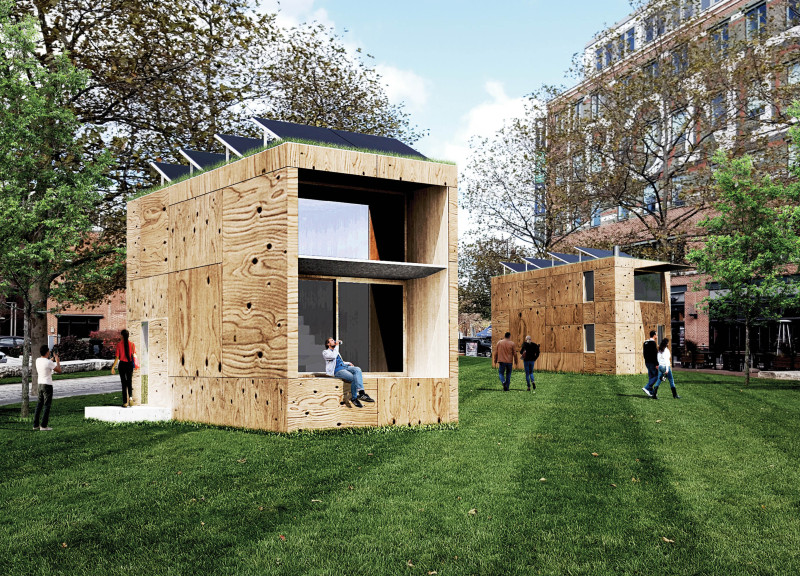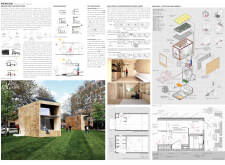5 key facts about this project
The Micro-Box offers an innovative approach to solving housing issues in busy urban areas such as London and New York. Designed as a compact living unit, it emphasizes functionality and sustainability, aiming to make the most of limited space. The overall concept revolves around creating a practical solution for city dwellers facing rising housing costs and limited availability.
Design Concept
The Micro-Box consists of studio units that are carefully designed to enhance the living experience within a small footprint. The layout incorporates a split floor design inspired by traditional Korean Hanok houses. This design effectively separates the kitchen from the living area, helping to manage humidity and reduce odors that can accumulate in small spaces. The result is a more comfortable and functional living environment for residents.
Materiality and Structural Assembly
The structure includes a thoughtful assembly of components, each selected for durability and efficiency. Key elements such as a roof and floor joist system provide essential support. A steel frame adds strength, while wood-framed walls offer a warm and inviting feel. The use of steel folding stairs maximizes vertical space, and built-in shelving enhances storage options, making every inch usable in these compact living areas.
Sustainability Features
A strong emphasis on sustainability marks the Micro-Box. Solar panels and a rainwater collection system are integral to the design, allowing for off-grid living. These features minimize reliance on traditional utility systems. Additionally, the roof is designed to harness natural ventilation, blocking excessive heat from the sun in summer and retaining warmth during winter. This results in a comfortable indoor climate throughout the year.
Application and Impact
The Micro-Box accommodates various uses, from public rentals to temporary living arrangements, thus showcasing its flexibility in meeting diverse housing needs. Positioned to occupy underutilized urban land, it represents a creative solution to urban development challenges. Anticipated support from government initiatives may further encourage the adoption of similar housing concepts.
The focus on maximizing space and improving the living experience culminates in a practical approach to living in the city. Every design detail serves the purpose of creating a comfortable environment that effectively addresses the needs of people living in dense urban areas.



















































